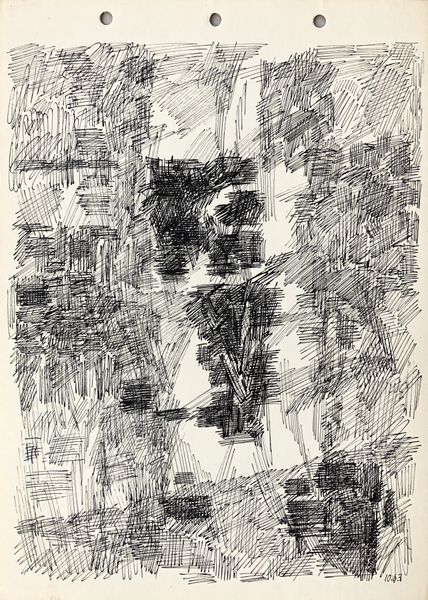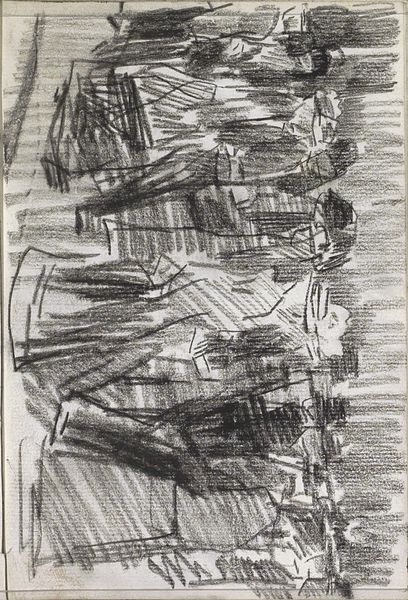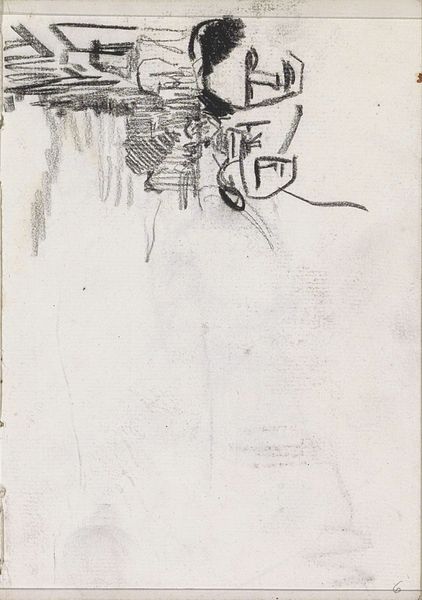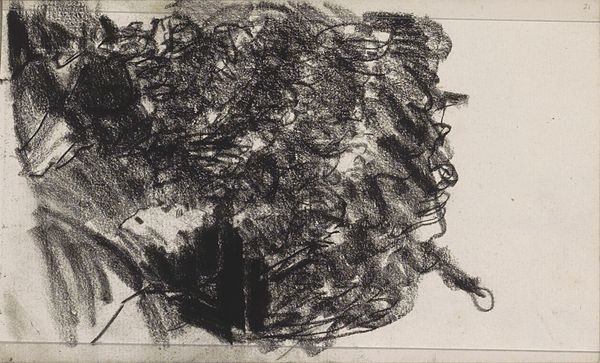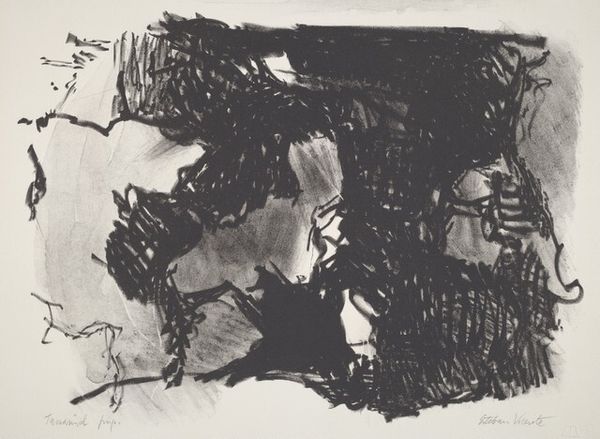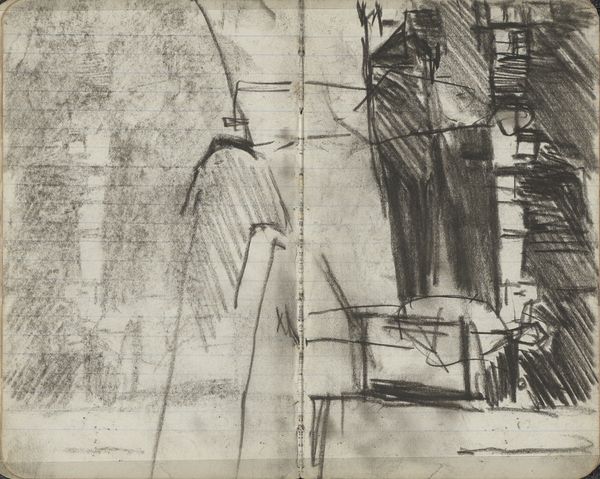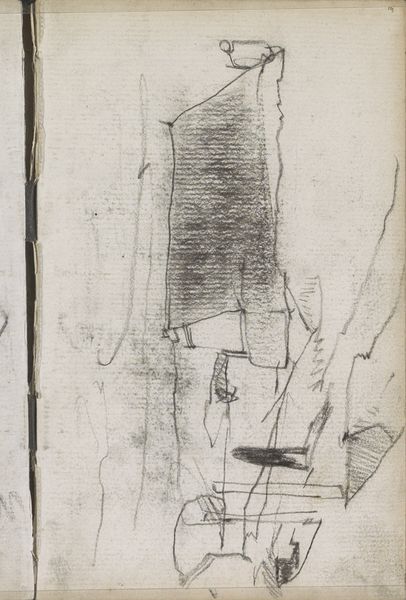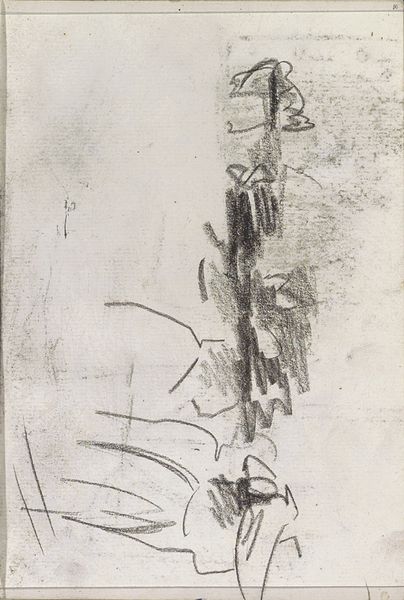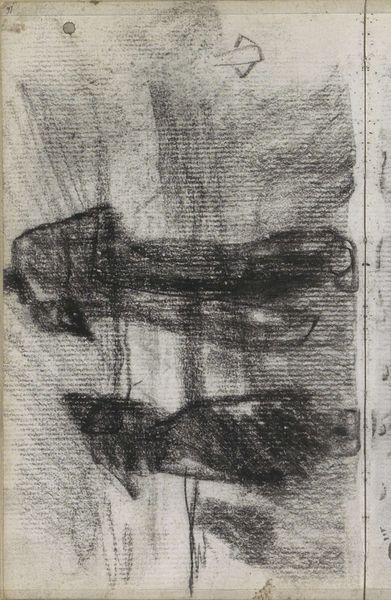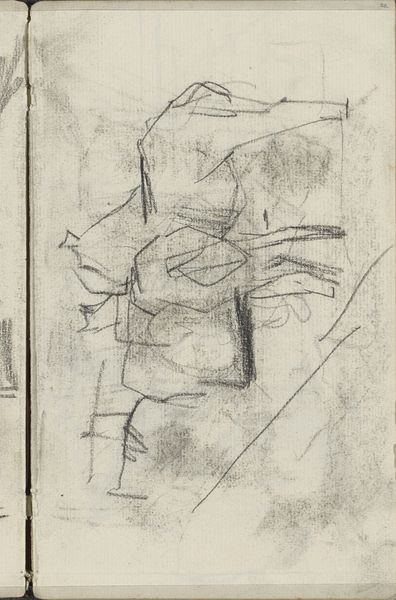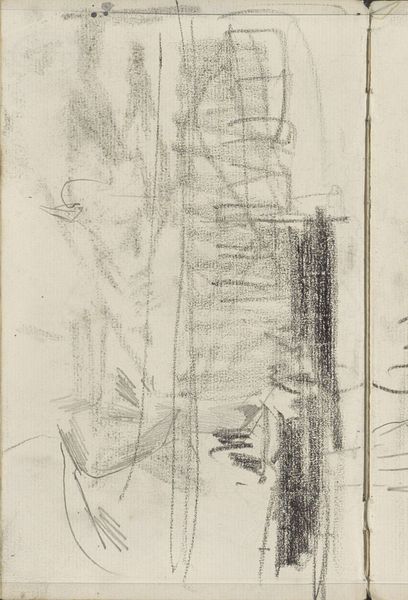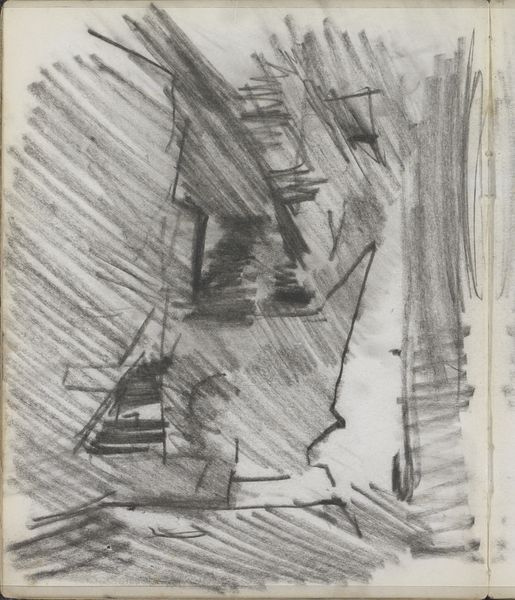
Copyright: Rijks Museum: Open Domain
Curator: Isaac Israels created this graphite drawing, “Vrouwenhoofd en drie wandelende vrouwen”, sometime between 1875 and 1934. It’s now part of the Rijksmuseum collection. Editor: My immediate reaction is that it looks fragmented and uncertain, a sketch of fleeting impressions. It’s gestural, and raw, the graphite almost smudged into the paper itself. Curator: Indeed. If we look at the figures, we can speculate about the socio-economic conditions impacting the lives of women during that time. Were they part of the emerging working class, finding freedom through labor? Or perhaps members of the bourgeoisie, enjoying leisurely strolls? How do we read their roles as women in society during this era? Editor: What I see are the individual graphite strokes, really. It appears that Israels favored a soft pencil and a laid paper to capture light and movement. It feels like he really enjoyed the process. There's a dynamism in the layering of those strokes – observe how it suggests the shifting of light on their faces and forms, capturing more than just a static representation. It hints at something ephemeral. Curator: The title references a 'women's head,' but the rapid strokes can also signal ideas about identity being blurred and ambiguous. Looking from the viewpoint of the modern woman, does this composition tell us anything about that era's perceptions, or do the sketches somehow transcend the limits of their time? Editor: Interesting thought. When focusing on process, it opens more questions than answers: Why the rapid application? Was it an attempt to capture a fleeting moment, or a deliberate rejection of the highly finished academic style? Also, who made the paper and the pencils, and under what conditions? Considering materials and the labor surrounding production allows another, often overlooked layer to his art. Curator: Precisely! It prompts us to reflect on intersectional dimensions often omitted in art analysis and reflect on contemporary concerns such as representation and labor. Editor: Absolutely, and these fleeting glimpses, caught in graphite and paper, offer a tangible link to the materiality of both process and experience, really giving insight into his moment of creation.
Comments
No comments
Be the first to comment and join the conversation on the ultimate creative platform.
